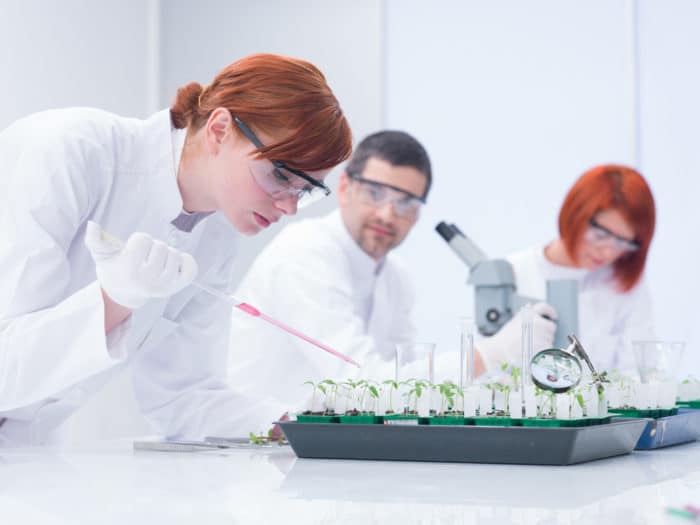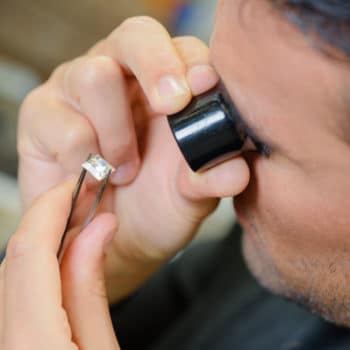Why We Love It
-
$77,190Potential Avg. Salary
-
-0.5%Job Growth Rate
-
Creativity FocusedCareer Attribute
-
Get to TravelCareer Attribute
A phytopathologist conducts research on infectious and non-infectious plant diseases that have the potential to harm crops, forests or other plant environments. Your purpose is to protect forests and other plant-heavy landscapes from high-risk pathogens.
Recommended Schools
What is a Phytopathologist?
Duties
Using basic and applied research, your role requires you to perform the following duties on a regular basis:
- Work alongside the research plant pathologist and molecular biologist to plan and assess new research opportunities.
- Undertake routine data collection such as samples of diseased plant life to run innovative tests on them.
- Maintain accurate and concise reports of results from experiments and communicate key aspects to different stakeholders.
- Design and implement different screening methods or platforms to monitor existing and emerging plant diseases.
- Run complex multi-layer data analysis with parametric and non-parametric statistical models, to determine the characteristics of a disease.
Day In The Life
When working as a plant pathologist, you have to spend a large part of your day to day in the company of plants. You will be taking care of the plant samples you are growing in the laboratory and run tests on them such as injecting with pathogens. Working with a cross-functional team, it is up to you to develop and enable new ways to address problems regarding virus, bacteria, fungi, oomycete, nematode and other pathogens in field.
The key is to carefully make detailed notes and reports in order to track the growth and key aspects of the disease. You will also design and executive relevant experiments to better understand how a plant disease may react to certain treatments and create a viable cure when possible. Another part of your routine tasks involves building strategic partnerships both internally and externally for assessing the state of the art and making new tests possible.
Occasionally, when there is news of diseased plants in an area, you will travel to the site and collect important samples of the plants. You will also take test samples of the soil and air in the near vicinity to rule out causes of the disease. In case of agricultural companies and farms, you may end up working in a field versus indoors, to work first-hand with affected plants and narrow down solutions.
Work Schedule And Typical Hours
Your work environment would either be a laboratory setting or out in the field where you will closely assess conditions to optimize a plant’s natural habitat. You will be spending long hours scrutinizing and studying plants from top to bottom utilizing technologically advanced equipment and devices like a microscope.
Growth Of The Job
Due to the vast array of employment options available for a Phytopathologist, the US Bureau of Labour Statistics predicts that soil and plant scientists can see a steady job growth rate of 7% from 2014-2024. There is increasing awareness regarding research on plant, water and soil protection strategies leading to better job prospects for those in this job category. Companies are also more interested to invest in advanced technologies that build crop resilience and resistance to disease, leading to greater profitability.
Typical Employers
You can find work at diagnostic laboratories, biotech companies, academic institutions, non-profit organizations, research facilities, farms, government agencies and private consulting firms. Phytopathologists are likely to work with botanists, entomologists, engineers, scientists and farmers to improve plant health.
Interested employers in this job sector are: Federal Emergency Management Agency, University of Arkansas for Medical Sciences (UAMS), Appalachian Regional Healthcare, University of Florida’s Institute of Food and Agricultural Sciences, Sakata Seed America, Inc., Bayer Crop Science, etc.
Recommended Schools
How To Become a Phytopathologist
As an aspiring phytopathologist, you may gain credentials at either the undergraduate or graduate level. You can complete a bachelor’s degree in any of the agricultural sciences such as botany, horticulture, plant pathology or biology, which would have coursework in phytopathology.
For advanced full-time research positions in academic institutions, a master’s or doctorate is required. Your graduate program should cover topics like agricultural education, biology, chemistry, tree diseases, genetics, mathematics, environmental science, disease resistance and plant-microbe interactions.
To excel on this career path, you should be an outside the box thinker, brainstorming about new and inventive strategies to create more resilient plant varieties that are resistant to disease. Good verbal and written communication skills are a must since your role may involve sharing press releases, write reports and interact with external audiences for interviews. Of course, a genuine passion for preserving plants and tackling plant diseases is vital to advance further.
Phytopathologist Salary Data
We’ve provided you the following to learn more about this career. The salary and growth data on this page comes from recently published Bureau of Labor Statistics data while the recommendations and editorial content are based on our research.
National Anual Salary
Low Range
$57,160Average
$77,190High Range
$112,820National Hourly Wage
Low Range
$27/hrAverage
$37/hrHigh Range
$54/hrHow do Phytopathologist salaries stack up to other jobs across the country? Based on the latest jobs data nationwide, Phytopathologist's can make an average annual salary of $77,190, or $37 per hour. On the lower end, they can make $57,160 or $27 per hour, perhaps when just starting out or based on the state you live in.
Salary Rankings And Facts
#156 Nationally for All Careers
Above Average Salary Nationally
Programs and Degrees
Here are the most common degrees for becoming a Phytopathologist. a is usually recommended and specifically a degree or coursework that prepares you for the particular field, see below.
Highest Education Among Phytopathologists
- 19.6% Doctorate
- 32% Masters
- 43.8% Bachelors
- 2.2% Associates
- 2.1% College
- 0.2% High School
- 0.1% Less than High School
Job Growth Projections and Forecast
2014 Total Jobs
36,4002024 Est. Jobs
36,200Job Growth Rate
-0.5%Est. New Jobs
-200How does Phytopathologist job growth stack up to other jobs across the country? By 2024, there will be a change of -200 jobs for a total of 36,200 people employed in the career nationwide. This is a -0.5% change in growth over the next ten years, giving the career a growth rate nationwide of Above Average.
Growth Rankings And Facts
#626 Nationally for All Careers
Above Avg. Growth Nationally
What Companies Employ The Most Phytopathologists
| Industry | Current Jobs | New Jobs Needed | % Increase |
|---|---|---|---|
| Federal government, excluding postal service | 17,600 | -1,700 | -2% |
| Research and development in the physical, engineering, and life sciences | 5,800 | 400 | 0% |
| Colleges, universities, and professional schools; state | 5,300 | 200 | 0% |













